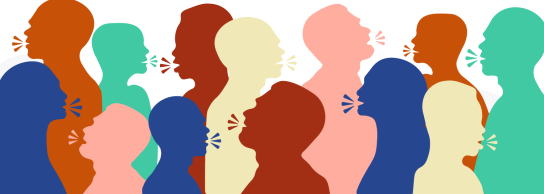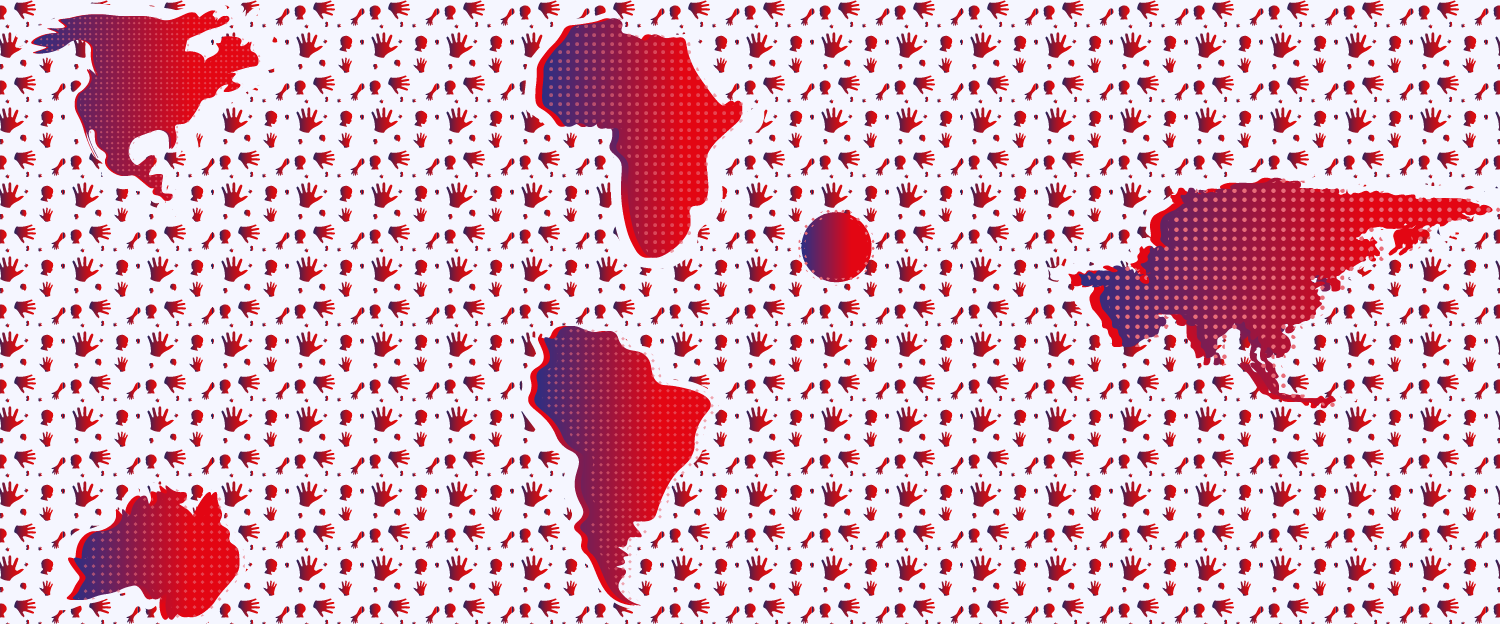Transcript
‘Words shift and change meaning based on who we are and what our experiences are’. This is how the artist Helen Cammock explains the thinking behind one aspect of her work. Joint winner of the Turner Prize in 2019, Cammock uses a variety of methods and materials – video, performance, photography – to explore the multitude of personal stories and people’s histories which are entwined together in the fabric of our culture. One of the techniques she uses is the ventriloquising of other people’s words. In the video installation The Singing Will Never be Done, for instance, she recites the text of Enoch Powell’s infamous anti-immigration speech, the ‘Rivers of Blood’, from the late 1960s. With this simple act of placing the words of one person into the mouth of another – Powell, a right-wing and xenophobic politician; Cammock, a Black British artist – she opens up a disquieting gap in our interpretation of the effects of the speech. As she says, ‘the more we can play around with what something means the more we can understand how meaning can change and therefore understand how experience shifts and changes depending on who you are’. Or to put it another way, if you can see how meaning is constructed, you can also see how it can change.
The idea that everything in life is a narrative is now a commonplace in our culture. This began as a radical critique of the way culture works, promoted by the poststructuralists of the 1980s. Social reality is a mirage, constructed in language and other symbols, and bound together by relations of power. Once you become aware of this, you can work to deconstruct it, and to promote a different configuration of values and beliefs for mainstream society. You can shift the meaning of words and, through this, recreate society.
There’s a very big difference between what an artist like Helen Cammock does and what populist politicians and their supporters do, of course. Politics tends to use simple stories which reduce the problems of the world into clear-cut struggles between good and evil, right and wrong, us and them.
Over the last decade, this idea somehow began to get picked up as much by the political right as those on the left. In the late 2010s, it became a mantra for populist agitators, with the Alt-Right commentator Mike Cernovich once explaining to an interviewer, ‘Look, I read postmodernist theory in college. If everything is a narrative, then we need alternatives to the dominant narrative’. And for him, these alternative narratives were strident nationalism and cultural exceptionalism.
There’s a very big difference between what an artist like Helen Cammock does and what populist politicians and their supporters do, of course. Politics tends to use simple stories which reduce the problems of the world into clear-cut struggles between good and evil, right and wrong, us and them. It uses them as a means of manipulative persuasion: to encourage people to support a candidate, a party or an issue. It uses them as a symbol of cultural identity: to express a set of values which bind together a faction or community. And more often than not these stories trade in binary opposites: protagonist versus antagonist; socialism versus capitalism; red states versus blue states; Leave versus Remain. In populist politics, these binaries slide even more into stereotype, until they end up as the sort of traduced stories and conspiracy theories which have plagued political discourse over the last few years.
It’s not just politicians. The media also tends to work with simplified narratives which seek out conflict and sensation. The world becomes a moralising and sentimentalised drama. Whereas real life – and the politics that govern it – doesn’t make for anything like such simple stories. It’s not a neatly arranged set of tribes with clear-cut views. It’s a complex, often confusing, mixture of experiences, feelings and opinions. Which is why art can play such an important role in helping us reflect on these experiences, and on the values and beliefs in society which give them meaning.
Unlike political or media storytelling, art facilitates questions rather than providing dogmatic answers. The work of someone like Helen Cammock might address political topics and might even have an activist element to it. But it purposefully doesn’t provide straightforward answers. As a form of storytelling, it’s plural and open-ended, questioning issues around race, cultural identity and collective belonging. And it’s precisely this quality which makes it so vital in helping us not only to look afresh at culture and society but also to understand how it can be made and remade.



Rate and Review
Rate this video
Review this video
Log into OpenLearn to leave reviews and join in the conversation.
Video reviews